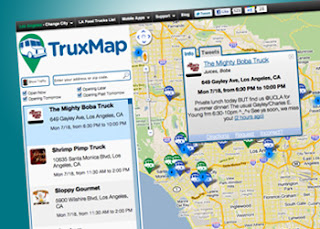 |
| Studebaker turned "Chuckwagon"...Thank you Mr. Goodnight! |
Food
trucks have a history that goes back further than you may have ever
imagined. Back before there were even trucks as we know them today.
In 1866, Texas rancher Charles Goodnight created the very first food
truck out of an army surplus wagon, called a Studebaker, and turned
it into a kitchen on wheels. It contained all the necessary shelves
and compartments carrying pots, utensils, and condiments. It even had
a hinged table that would flip out, allowing the cook to prepare and
serve the food. Because the word “chuck” was slang for good,
heartwarming food, those cattlemen called it the chuckwagon.
Although
the food truck has been around for many years, serving those
blue-collared workers on the jobsite, there has been a recent
explosion in the food truck industry. Since those days of the simple
“chuckwagon,” the food truck has evolved to serve many different
cuisines and gourmet foods. The truck itself has also evolved in its material culture, going
from a simple vehicle used strictly for work purposes, to a mobile
canvass covered in artwork expressing the uniqueness of each
individual truck. Each truck is now a symbol of more than just food, but of a consumer experience eating something exclusive and exciting out of the back of a truck. The food truck craze has caught the attention, (and stomachs) of people all across the world, and spots like those pictured below, like the North Austin Trailer Yard and those in south Austin, are becoming a symbol of the growing culture and how it is spreading so rapidly. The food truck has definitely evolved its own
culture, gathering popularity among people from all walks of life.
 |
| North Austin Trailer Yard, where they have a little bit for everyone...and a cool dinosaur. |







